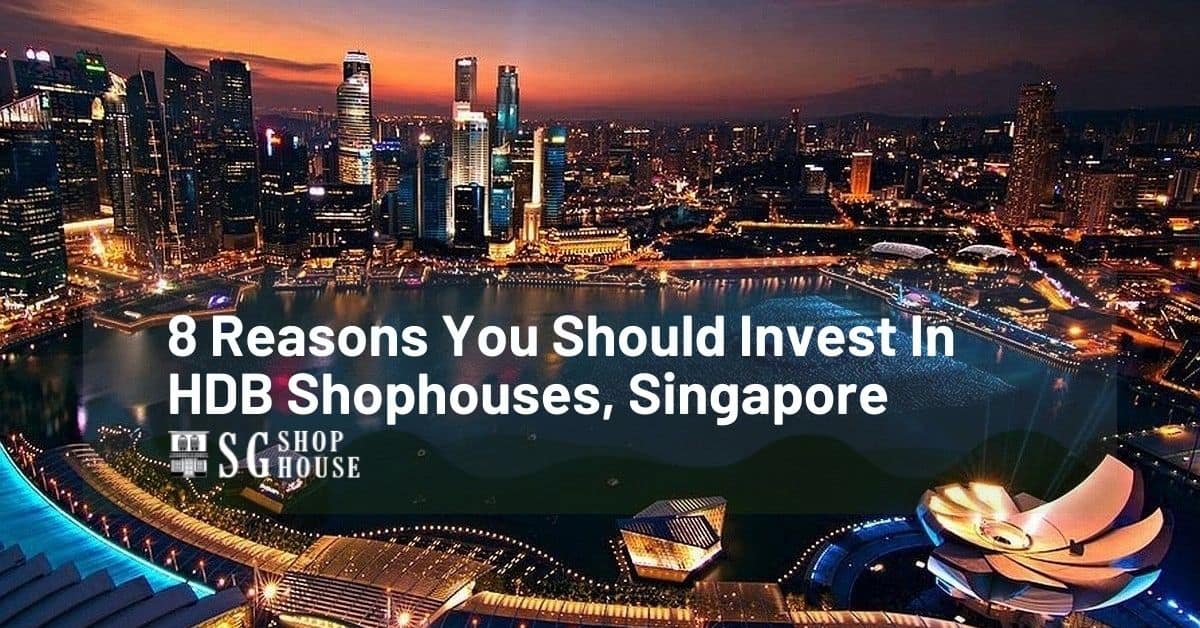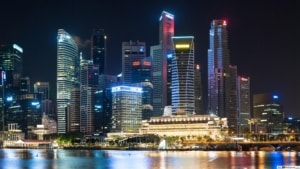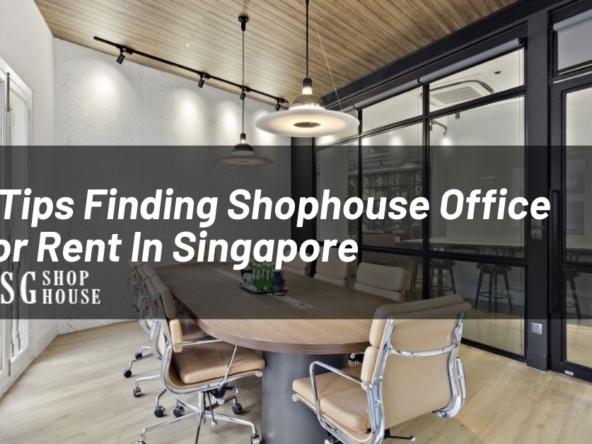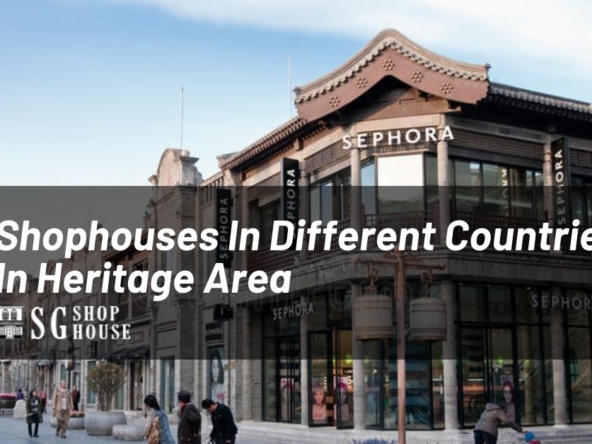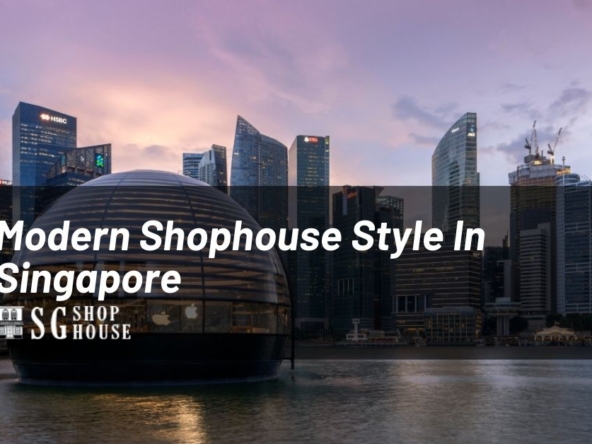Few things get more attention than a HDB shophouse for sale – and for good reason. In 2014, the median HDB shophouse price in Singapore peaked at S$3,824 per square foot (psf) on land area. Due to the implementation of the Total Debt Servicing Ratio (TDSR) loan curb, however, demand for HDB shophouses decreased in line with other types of property. In 2017, the median HDB shophouse price stood at S$3,301 psf on land area. Even post-TDSR, many HDB shophouses managed to rise in value. Notably, a freehold unit in the Tanjong Pagar area was bought in 2013 for S$6.2 million and then resold in 2017 for S$9.1 million – a 47 percent profit over four years. Here’s why HDB shophouses are popular with property investors and buyers alike, and why you should give invest in HDB Shophouses some serious consideration. Let’s take a look at 8 reasons you should invest in HDB Shophouses, Singapore.
1. INVEST IN HDB SHOPHOUSES CAN HOLD THEIR VALUE
Much like fine wine or art, HDB shophouses provide a cultural value that’s not always easy to quantify. Moreover, a combination of the prestige that comes with owning a HDB shophouse, along with the scarcity of these properties, helps them to hold value even during downturns. For example, in 2015, when the property market was still in a slump, Spanish tycoon Ricardo Portabella Peralta paid around S$2,600 psf for two HDB shophouses near the Telok Ayer MRT station. The total price (S$18.2 million) is still one of the highest recorded transactions in the area, proving that investing in HDB shophouses can hold their value even in a weak market.
2. HDB SHOPHOUSES GIVE PRESENCE TO A BUSINESS ENTITY
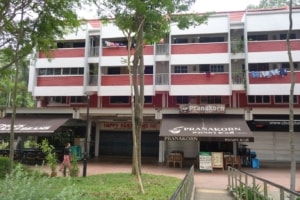
It’s not usually hard to find a business tenant for a HDB shophouse, because of its unique character. The location of a business reflects on its philosophy and character (it’s the “flavour” of the business, if you like), and it’s hard to pull that off in some locations – malls and office buildings tend to have a standardized, modern-looking design and interior. To understand the boost a HDB shophouse can give to businesses, consider the famous Chye Seng Huat Hardware (a deliberately misnamed cafe-eatery located in a HDB shophouse). The establishment’s retro-industrial image would be hard to pull off authentically in a shopping mall. Even if that had been possible, some stone-faced mall manager would probably take issue with the name and disallow it. In terms of homes, invest in HDB shophouses lets you create living spaces that are harder – or sometimes impossible – to achieve with cookie-cutter condo units. If you like the loft aesthetic, for instance, you can create it easily with a HDB shophouse.
3. MANY HDB SHOPHOUSES ARE IN CENTRAL LOCATIONS

In places like Chinatown, Telok Ayer, or Amoy Street, HDB shophouses are often used as an alternative office space. They’re especially favoured by startups or small companies that want a location within or near the Central Business District (CBD), but cannot afford the higher rental rates of conventional offices. Most HDB shophouses provide a rental yield of between 2.5 to 2.7 percent according to Colliers International, but there are occasionally boutique firms – such as design agencies – willing to fork out more for units that flow with their unorthodox, hipster-ish vibe. Investors have long been aware of this. Hence, there has a constant demand for HDB shophouses within or near the CBD. Case in point: In 2010, a row of five HDB shophouses (112 to 116 Amoy Street) was sold for S$24.5 million. In 2011 – yes, that’s one year later – the same units were sold for S$34.3 million. And that’s not the end of it: 8M Real Estate bought the same HDB shophouses for S$50 million in 2014 – more than double the 2010 price paid.
4. HDB SHOPHOUSES HAVE A LOT OF SPACE, DESPITE BEING IN BUILT-UP AREAS
When you think of living or working spaces in built-up areas, such as the CBD, Chinatown, or Joo Chiat, you’re probably thinking of small spaces. There aren’t many new developments that can be crammed into these already packed areas. The good news is, HDB shophouses were in this area long before they got so packed. That gives you a lot of room (often at least 1,200 square feet) despite being close to major amenities.
5. A CONSERVED HDB SHOPHOUSE HAPPENS TO BE VERY RARE
There are only around 6,500 HDB shophouses under conservation in Singapore. If you’re considering the more ornate HDB shophouses with ornamentation and elaborating tiling, there’s even fewer of them standing. What this means is that the HDB shophouses have scarcity value (there’s a reason gold costs more than steel). And as time goes by, scarcity value can only increase, reflecting the sense of prestige and privilege in owning a sizeable piece of national history.
6. SOME HDB SHOPHOUSES ARE ONE-OF-A-KIND ARCHITECTURAL FEATURES
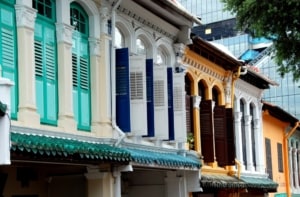
Some HDB shophouses have an open front or rear courtyard. This is an architectural boon that provides a perfect setting for family gatherings. Some might also have an air well in the middle of the HDB shophouse. Besides allowing natural light to enter and optimizing air circulation (essential before the days of air-conditioning), owners can also implement unusual features such as an indoor Zen garden or a giant water feature. One thing’s for sure, your interior designer will be as excited as a kid in a candy shop.
7. MANY HDB SHOPHOUSES ARE PROTECTED
Many HDB shophouses have been given conservation status. Historic districts with conserved HDB shophouses include Boat Quay, Chinatown, Kampong Glam, Little India, Blair Plain, Cairnhill, and Emerald Hill. For conserved HDB shophouses, the Urban Redevelopment Authority (URA) has put in place certain restrictions and rules on renovations, such as having to seek clearance before any air-conditioning can be installed. Although this can prove a hassle for HDB shophouse owners and tenants, it’s overall a positive thing for investors; when the government takes back land for roads, MRT stations, or other use, they have an obligation to try to leave the conserved HDB shophouses untouched.
8. MOST OF THE HDB SHOPHOUSES PLACED IN STRATEGIC LOCATION
So you’re a hard-nosed property investor, who’s not swayed by things like historical value or clever, ironically-named cafes. Well if you go back to the root of property value – location – there’s no denying HDB shophouses have it. HDB shophouses along Katong are located in the middle of a gentrifying food paradise, and HDB shophouses in the Holland Village area have quick access to nightlife, retail, and dining. Meanwhile, HDB shophouses in places like Boat Quay are, as we’ve pointed out above, in the heart of Singapore. There are so many HDB shophouses located in a well built-up or central area, that it’s hard to go wrong when picking one. If you do find one, act fast –invest in HDB shophouses (especially ones with conservation status) tends to sell quickly once it becomes available on the market.


